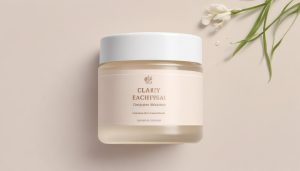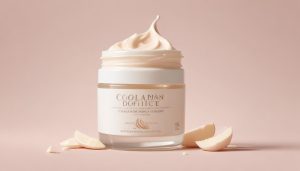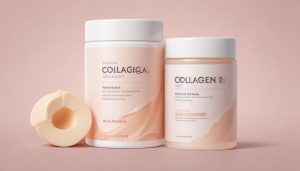How Probiotics Transform Your Skin and Gut
Natalie Brooks August 24, 2025
Ever wondered how what’s inside your gut could influence the look and feel of your skin? This guide explores the fascinating connection between probiotics, gut health, and radiant skin, uncovering science-driven insights and everyday wellness strategies to help you feel and look better naturally.
Exploring the Science Behind Probiotics and Wellness
Probiotics are often called beneficial bacteria, supporting not just digestive harmony but influencing overall wellness and beauty. Science is unwrapping more connections between these microorganisms and the appearance of our skin. When the gut microbiome is balanced and thriving, it tends to reflect on the outside, too. Researchers are actively studying the gut-skin axis, highlighting how internal bacterial environments may influence irritation, complexion, and overall skin clarity (Source: https://www.health.harvard.edu/nutrition/probiotics-the-healthy-side-of-bacteria).
Digestive comfort is a key factor in daily vitality, and probiotics play a noticeable role here, supporting nutrient absorption and even immune system responses. Wellness trends show that supplementing with specific probiotic strains might be useful for those seeking to optimize both mood and digestion. The pleasant surprise is that this gentle approach can go beyond feeling good – some users report smoother, brighter skin after consistent use, hinting at systemic benefits (Source: https://www.ncbi.nlm.nih.gov/pmc/articles/PMC3539293/).
Beyond supplements, people bring probiotics into their lives through fermented foods. Yogurt, kimchi, sauerkraut, and kefir have found supporters for their dual digestive and dermal benefits. As more consumers look for holistic wellness tips, integrating these foods offers an accessible way to support gut health naturally, promoting clearer, more balanced skin as part of a mindful beauty routine.
Gut Health and Its Surprising Impact on Your Skin
Gut health remains at the forefront of modern beauty discussions, thanks to new research showing that digestive wellness can influence skin’s glow and resilience. When the gut’s microbial community is out of balance, it may spark inflammation throughout the body, sometimes appearing as acne, dryness, or sensitivity. Addressing internal balance has become a sought-after approach for those troubled by persistent skin issues that topical creams haven’t resolved.
The skin’s ecosystem and the gut’s microbiome communicate through complex biochemical pathways. Some experts have called this the “gut-skin axis.” Supporting gut wellness through probiotics is increasingly linked to a calming effect on inflammatory skin conditions like eczema and rosacea. A consistent, balanced diet rich in fiber and fermented foods, combined with stress-reducing practices, can improve both digestive and dermal outcomes over time (Source: https://www.ncbi.nlm.nih.gov/pmc/articles/PMC6048199/).
Building a healthier gut doesn’t require radical changes. Even small adjustments – such as adding live-culture yogurt to breakfasts or choosing sourdough over white bread – can nudge the gut ecosystem in a rewarding direction. Many find that after a few weeks of mindful eating, there’s a visible difference in both digestion and complexion, demonstrating how internal health truly radiates outward.
Practical Ways to Include Probiotics in Everyday Life
Incorporating probiotics into a daily routine is simpler than most expect. Beyond capsules and powders, natural sources abound. Kefir, a tangy fermented dairy drink, is celebrated in many cultures for its probiotic punch. Those seeking non-dairy alternatives might try fermented teas like kombucha or craft their own vegetables for salads and snacks. Evidence suggests these foods can support diverse gut flora, which is key for both immunological and cosmetic benefits (Source: https://www.nccih.nih.gov/health/probiotics-what-you-need-to-know).
For people on the go, portable options like yogurt cups, prepackaged kimchi, and other fermented bites have become accessible in most supermarkets. Reading food labels to ensure live and active cultures are present is important. Making a habit of including a probiotic-rich food in at least one daily meal can yield rewarding changes in digestion and general wellness within a few weeks.
Besides eating probiotic foods, prebiotics – plant fibers that act as “fuel” for good bacteria – are just as essential. Bananas, garlic, leeks, and asparagus are easy ways to support probiotic activity and encourage a healthy gut environment. This balance between probiotics and prebiotics builds a powerful foundation for long-term gut and skin harmony.
Linking Mental Wellness to Gut and Skin Health
The conversation around probiotics extends to mental clarity and emotional well-being. Studies show there is a bidirectional relationship between the gut and the brain, often referred to as the gut-brain axis. When the gut is balanced, people commonly report feeling more centered and less prone to stress, which may also reduce skin flare-ups associated with anxiety or hormonal flux (Source: https://www.apa.org/monitor/2012/09/gut-feeling).
Chronic stress is known to compromise the gut microbiome, negatively impacting digestion and the skin’s vitality. Wellness enthusiasts advise regular exercise and mindfulness to both calm the gut and promote a healthy complexion. The synergy between gut health, emotional state, and skin quality cannot be understated; nurturing one area often enhances others in surprising and meaningful ways.
While more clinical studies are needed, anecdotal evidence consistently supports that a balanced microbiome may ease mood swings, improve focus, and nurture natural beauty from within. It’s one more reason why probiotics have earned a place among trusted wellness staples in everyday routines.
Choosing Probiotics Safely and Finding What Works
With a growing market, choosing the right probiotic for individual wellness and beauty goals can feel overwhelming. Experts urge careful consideration of the specific strains included, as research shows some strains are better suited for digestive concerns while others may aid skin barrier protection or immune support (Source: https://ods.od.nih.gov/factsheets/Probiotics-Consumer/).
It’s wise for users to consult healthcare professionals before adding new supplements, especially for those with immune-compromised conditions. Some providers offer resources for comparing efficacy or provide third-party testing information. Tracking results in a journal — noting changes in both digestion and skin appearance — helps personalize the process and identify the most beneficial routine.
Realistically, no single approach fits all. What helps one person’s skin might not help another’s, highlighting the importance of gradual, mindful experimentation. When integrated with a balanced diet, good hydration, and adequate sleep, probiotics can be a powerful partner on the path to wellness and renewed self-confidence.
Long-Term Results and Building a Sustainable Beauty Routine
Lasting beauty and vitality come from sustained habits. For many, the most rewarding effects of probiotics emerge after several months of use. Small improvements — clearer skin, steadier digestion, improved mood — accumulate over time, building a foundation that supports confidence from the inside out. When probiotics are part of a diverse and plant-rich diet, the potential for lasting wellness only grows stronger.
Routine is key. Building probiotics into meals, prioritizing fiber, and managing stress levels create synergistic benefits. Skin becomes less reactive, and daily discomfort is reduced for many, offering well-being that is both felt and seen. Importantly, individuals are encouraged to tailor their routines, remaining attentive to their body’s cues and needs as their health journey unfolds (Source: https://www.cedars-sinai.org/blog/should-you-add-probiotics.html).
Making these practices enjoyable — such as cultivating new recipes or celebrating milestones — makes sustained progress easier. Over time, these small routines culminate in a sense of renewal that radiates throughout daily life, showing beauty that truly starts within.
References
1. Harvard Health Publishing. (2020). Probiotics: The healthy side of bacteria. Retrieved from https://www.health.harvard.edu/nutrition/probiotics-the-healthy-side-of-bacteria
2. Kober, M.M., & Bowe, W.P. (2015). The effect of probiotics on skin: A literature review. Retrieved from https://www.ncbi.nlm.nih.gov/pmc/articles/PMC3539293/
3. Salem, I., et al. (2018). The gut microbiome as a major regulator of the gut-skin axis. Retrieved from https://www.ncbi.nlm.nih.gov/pmc/articles/PMC6048199/
4. National Center for Complementary and Integrative Health. (2022). Probiotics: What you need to know. Retrieved from https://www.nccih.nih.gov/health/probiotics-what-you-need-to-know
5. American Psychological Association. (2012). That gut feeling. Retrieved from https://www.apa.org/monitor/2012/09/gut-feeling
6. National Institutes of Health, Office of Dietary Supplements. (2021). Probiotics. Retrieved from https://ods.od.nih.gov/factsheets/Probiotics-Consumer/







